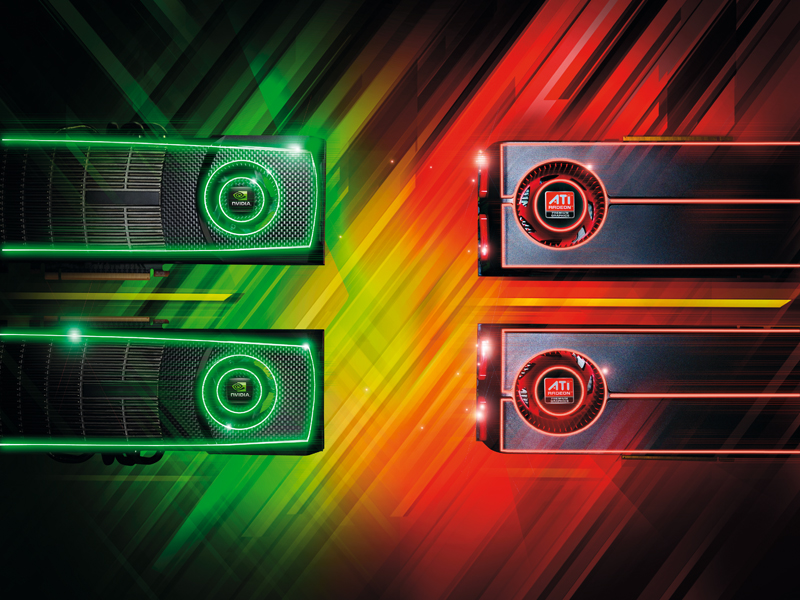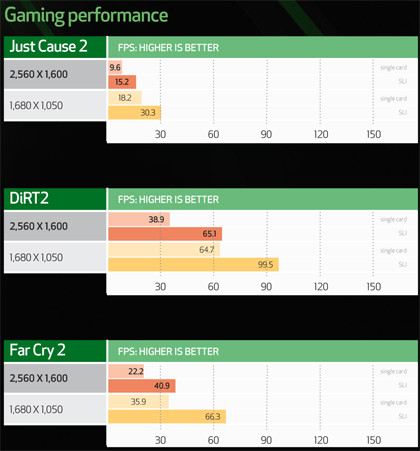SLI vs CrossFire: which is better?
What's better than one graphics card? Two, but CrossFire or SLI?

For many a year even the thought of setting up a multi-GPU system has caused the most tech-savvy of PC enthusiasts to eat their own heads in complete and utter frustration.
It wasn't just the fact that the mere action of setting a CrossFire or SLI system up was a tiring process of exacting component matching, BIOS tweaking and software hell, promptly followed by mental breakdown.
The fact remained that if you were one of the few with that magical golden ticket, a functional multi-GPU system, you didn't actually get that much of a performance return for the extra silicon you'd painstakingly laid in your rig.
Originally the big sell was the idea of picking up a mid-range graphics card now, then once the thirst for upgrading became too strong to countenance you could pick up another of those cards, drop it in your rig and hey-presto a million times better performance.
Many an SLI or CrossFire motherboards got sold on the back of this idea, to people wanting the ephemeral security of perceived future-proofing. Obviously it wasn't that simple and never quite turned out to give the sort of returns you really desired or deserved.
And the fact was that by the time you came to upgrade to another of those mid-range cards they had become so passé that you would be just as well spending the same again on a superior single-GPU card. And then you wouldn't have to cope with the vagaries of multi-GPU driver support either…
Software-wise though things have been steadily improving. No longer do we have the headaches we once did trying to get our drivers to recognise the extra GPUs, and hot-fixes come thick and fast to solve the inevitable problems that accompany new games releases. Yes, DiRT2, we're looking straight at you.
Sign up for breaking news, reviews, opinion, top tech deals, and more.
The rise of the multi-GPU single card has helped this; specifically AMD's change in approach leaving the high-end of its graphics options to those monstrous, dual-wielding pixel pushers. So now the multi-GPU setup is all about the high-end performance systems not adding in extra boards somewhere down the line.
That still left the fact that, at best, you were looking at a 60 per cent increase for adding in a second card, with that increase diminishing as you moved to triple SLI or quad CrossFire. But with both Nvidia and AMD releasing its new generation of DX11 compatible graphics cards it's time to see if you're still better off buying the fastest card you can or whether two cards are finally better than one.
Nvidia GeForce GTS 250
Representing the last generation of graphics we've got Nvidia's lower-end cards offering a multi-GPU setup for less than £200 - namely the GTS 250.
In modern DirectX 10 gaming you're looking at an average percentage increase that tops out just under the 70 per cent mark when you factor in a second card. With the extra graphics memory and processing power it's not a bad boost for the cash.
Obviously, when you're looking at the tougher benchmarks of STALKER: Call of Pripyat and Metro 2033 the results tail off considerably given the GPU's a couple generations out of date now.
Still, if you've got a GTS 250 sitting in your rig and a 1,680 x 1,050 monitor strapped to it, for less than £100 you can be hitting over 30fps with everything turned on in Just Cause 2.

Nvidia GeForce GTX 470
The Heaven benchmark scales brilliantly with multiple GPUs, and the GTX 470 actually manages to post a 101 per cent increase.
The results in-game aren't quite so compelling though, but the key thing to note is the disparity between the increase in the higher resolutions compared to the lower. The average increase at 2,560 x 1,600 is a remarkably impressive 80 per cent, giving a comparatively huge boost to the lucky few out there with such large-screen gaming habits.
On the flip side if you're looking to max out the frame rates at the lower res of 1,680 x 1,050 you'll be disappointed with an average increase of only 32 per cent. Still, this shows where the emphasis for modern SLI is going – the big screens.

Nvidia GeForce GTX 480
As you'd expect from essentially the exact same architecture the performance increase from adding in a second GTX 480 is almost identical to that gained by the GTX 470.
That said though, looking at the raw figures proves that if you want the fastest dual-GPU setup going, then it's time to stump up the cash and drop two of Nvidia's most powerful Fermi cards in the same machine.
That is then a graphics setup totalling almost £1,000 but when you're picking up over 100fps in both DiRT2 and Far Cry 2 at 2,560 x 1,600 on the highest settings your eyes might tell you it's worth it.
High-res gaming is where the Fermi card's SLI emphasis lies, and with these figures it's quite hard to disagree with Nvidia on this one.
